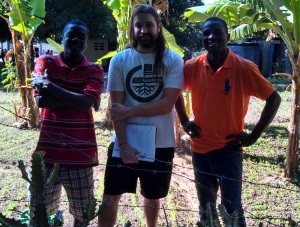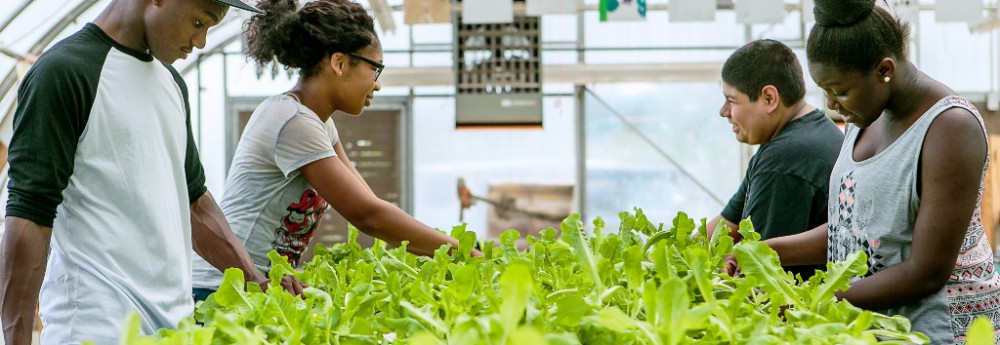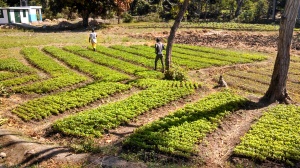Welcome to Cold Weather Aquaponics!. If you live in a cold climate area and are interested in Aquaponics follow this blog!
Trip to Bayonnais, Haiti
Image
Trip to Bayonnais
After visiting Bayonnais in January 2014, aquaponics as a teaching tool, as well as an alternative to traditional farming, is looking very optimistic. The agronomists, JaqueElie, Villate, and Wallace are very knowledgeable and I am very confident they will be able to learn, and teach this technology to others. The site will be a training facility, for teaching farmers and students, as well as a supply hub for surrounding operations.

Before starting an aquaponics project, several factors must be in place.
● People knowledgeable in agriculture
● Access to commercial fish feed
● Access to tilapia fingerlings
● Reliable power supply
● Access to seeds
● Adequate water supply
● Readily available construction materials
The agronomists are ready to begin and believe the aquaponics project will greatly benefit
students, farmers, and the community with both fresh food and a source of income. Among those benefits, Jaque-Elie insisted that the facility be modern, so that it can be an example of where Bayonnais should be in the future.
Before starting the project, the agronomists will need to secure a source for commercial fish feed, agricultural lime, chelated iron, biological pesticides and tilapia fingerlings. It may be, depending on the difficulty of acquiring tilapia fingerlings, necessary for the agronomists to also build and operate a hatchery to produce tilapia fingerlings for the aquaponics project, and future aquaponics farmers. As we and the agronomists start to begin to design the facility, we will determine power needs, and all construction materials needed.
The design that may be most appropriate for aquaponics in Bayonnais is a Media-based,
reciprocating flow aquaponics. This design is similar to a vertical flow constructed wetland
(VFCW) and produces approximately 24 times the amount of as produce compared to fish
production. This method uses the least electricity, and yields high quality produce and fish at rates that exceed traditional agriculture. The water usage is only 10% of traditional vegetable farming and produces ~50 times the amount of tilapia per unit of water as compared to pond culture. The labor required to operate the system involves chemical water testing, seeding, harvesting, feeding fish, applying IPM (integrated pest management) techinques and record keeping. The recording of data is imperative, as this data will improve the design for future aquaponics startups in Bayonnais, and will serve as a powerful platform for data analysis in the school. Students can become actively involved in testing the water for pH, nitrogen content, dissolved oxygen, iron and many other parameters that affect the performance of the system. The decisions they make on how much to feed and how much lime to add will be determined by the data they collect and analyse. We envision multiple, replicated systems for the use of controlled experiments using different plant types, fish stocking densities, feeding rates etc…
The following factors are currently under discussion:
● Source of commercial fish feed
● Source of tilapia broodstock
● Source of seeds
● Quality of water coming from irrigation canal
● Source of river gravel to be used for plant growing substrate
● Source of pumps, air blowers and plumbing supplies.
● Hatchery requirements
Once we can secure a source of feed, broodstock, seeds, water quality, and composition of gravel, we can begin the project. We propose the project to take place in the following phases once started:
1. Gather materials for construction of hatchery and aquaponics systems (gravel, concrete, pumps etc…)
2. Begin construction of standalone power unit and hatchery (if needed). The hatchery can begin operation once completed and training will begin for hatchery management
3. Once hatchery is completed, construction of the aquaponics training facility will begin.
Ongoing hatchery training will be done in person during construction and via email once
water is flowing. Site for aquaponics training facility will be laid out and construction can
begin.
4. As aquaponics systems are being constructed, agronomists will be operating the
hatchery and starting to produce tilapia fingerlings. Preliminary aquaponics training will
begin as construction takes place.
5. Once the aquaponics systems are completed, they will be stocked at 25% capacity of
fish to allow for bacterial colonization of the new aquaponics systems. This takes
approximately one month before the systems can be stocked with more fish. After 6
months post-construction, the systems will be fully stocked and operational.
Projected facilities needed:
1. Hatchery complete with broodstock tanks, fry incubation, and fingerling tanks
2. Several replicated aquaponics systems for training purposes
3. Seeding and harvesting area
4. Holding tank for market ready fish
5. Additional power supply for all facilities listed
6. Storage area for feed and supplies


